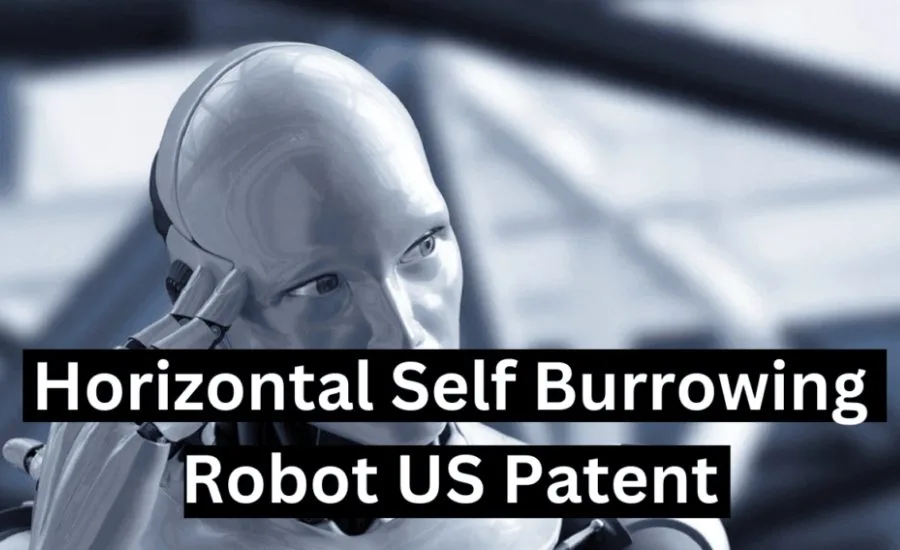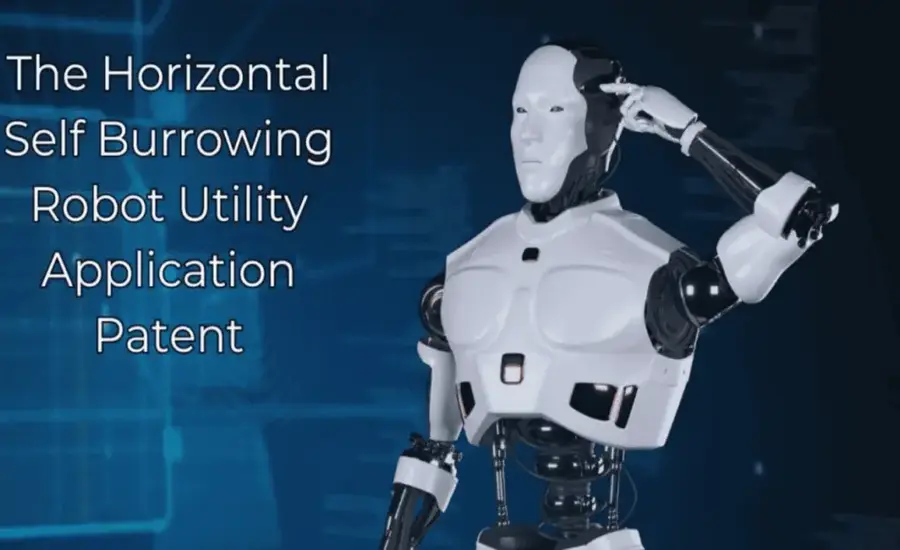Introduction
In today’s rapidly evolving technological landscape, robotics has advanced beyond traditional automation and has entered new realms of innovation. Among the most groundbreaking developments in robotics is the concept of the horizontal self-burrowing robot. This particular innovation holds the potential to revolutionize fields ranging from construction and environmental monitoring to agriculture and utilities management. With its ability to burrow horizontally through various terrains, this type of robot addresses a critical need for sub-surface operations without disrupting the surface or requiring extensive manual labor.
The invention of horizontal self-burrowing robots is not just an intriguing technological leap but also reflects the growing focus on automating previously labor-intensive tasks. As companies and researchers push the boundaries of what robots can do, these machines have moved from theoretical concepts into practical applications. This article explores the utility, applications, patents, and future prospects of horizontal self-burrowing robots in great detail.
The Concept of Horizontal Self Burrowing Robots
A horizontal self-burrowing robot is designed to autonomously move through various underground environments without the need for human intervention. Unlike traditional tunneling machines, which usually require operators and cause significant disruption to the surface, these robots are capable of tunneling horizontally with minimal disturbance.
The core principle behind these robots is their ability to dig through soil or rock while navigating underground, often using advanced sensors to map out their route. Self-burrowing robots are typically equipped with propulsion systems that allow them to push or pull themselves forward, drilling or cutting through the material in front of them. This type of robot is controlled through software systems that can guide it to its desired destination without constant human input.
Moreover, horizontal self-burrowing robots offer remarkable versatility. They can perform tasks ranging from laying pipelines to monitoring soil conditions, all while reducing the ecological footprint of traditional sub-surface operations. Given that many large-scale projects, such as pipeline installations and subterranean infrastructure development, often cause disruptions to urban environments or natural ecosystems, the introduction of these robots promises a significant improvement in efficiency and environmental impact.

Key Features of Horizontal Self-Burrowing Robots
Autonomous Navigation
One of the most significant features of horizontal self-burrowing robots is their autonomous navigation capabilities. Using artificial intelligence, GPS systems, and specialized sensors, these robots can navigate through complex sub-surface environments. Unlike conventional tunneling equipment, which typically requires a predefined route, self-burrowing robots can adapt their paths in real time, avoiding obstacles and rerouting as necessary.
Terrain Adaptability
These robots are designed to handle a wide range of terrains, from soft soils to harder substrates like rock. The adaptability of the robot is enhanced through its cutting mechanism and propulsion system, which can be adjusted depending on the resistance it encounters underground. This makes horizontal self-burrowing robots suitable for various industries and environmental conditions.
Eco-Friendly and Low Disruption
One of the greatest advantages of these robots is their ability to operate with minimal surface disruption. Traditional excavation projects can lead to surface-level damage, erosion, and disruption to ecosystems or urban areas. Horizontal self-burrowing robots, by contrast, can move through the sub-surface with little or no impact on the land above, thus reducing ecological damage and lessening the need for restoration projects post-construction.
Precision in Sub-Surface Operations
Horizontal self-burrowing robots come equipped with highly precise control systems, allowing them to operate with an extraordinary level of accuracy. This precision is vital when laying underground infrastructure like cables or pipes, as the margin for error is often minimal in such projects. The precise nature of these robots ensures that they follow exact pathways, leading to increased efficiency and reduced risk of costly errors.
Utility and Applications of Horizontal Self Burrowing Robots
The potential uses for horizontal self-burrowing robots span a wide range of industries, each of which could benefit from the automation and precision these robots provide. As we delve into the various applications, it becomes clear that these machines could have far-reaching implications for how sub-surface tasks are performed in the future.
1. Utility and Infrastructure Management
One of the most direct applications of horizontal self-burrowing robots is in the management and installation of underground utilities. This includes laying pipelines for water, gas, and sewage, as well as installing electrical conduits or fiber optic cables. Traditional methods for laying such infrastructure often involve digging large trenches, which disrupts traffic, damages the surface, and requires extensive labor. Horizontal self-burrowing robots, however, can tunnel through the earth while laying cables or pipelines with minimal disruption to the surface.
In urban areas, where space is limited, and disruptions can have significant economic and social impacts, these robots provide a solution for infrastructure development without creating significant surface-level disturbances. In addition, they enable utility companies to upgrade existing infrastructure or install new systems with greater speed and precision.
2. Environmental Monitoring and Remediation
Horizontal self-burrowing robots are particularly valuable for environmental monitoring and remediation efforts. These robots can be deployed to collect soil samples, monitor underground water levels, or detect contaminants in the soil. In the context of environmental disasters, such as oil spills or chemical leaks, horizontal self-burrowing robots can play a key role in detecting the extent of contamination and guiding remediation efforts.
By utilizing sensors, these robots can provide real-time data about sub-surface conditions without the need for invasive digging or drilling. This data can then be used to assess risks, plan interventions, and ensure that clean-up efforts are accurately targeted.
3. Agriculture and Soil Management
The agricultural sector is another field that stands to benefit from the deployment of horizontal self-burrowing robots. Farmers and agricultural scientists can use these robots to monitor soil health, moisture levels, and nutrient distribution across large areas of farmland. Traditional methods of soil monitoring often require manual labor and surface-level disruptions, but self-burrowing robots can gather necessary data without disturbing crops or the soil structure.
Furthermore, these robots can be utilized in the installation of sub-surface irrigation systems, allowing for more efficient water management on farms. With growing concerns over water scarcity and the need for sustainable farming practices, horizontal self-burrowing robots could contribute significantly to the future of precision agriculture.
4. Mining and Resource Exploration
Horizontal self-burrowing robots can play a critical role in mining and resource exploration. Rather than using traditional open-pit mining or drilling methods, which can cause significant environmental damage, these robots can be sent underground to search for valuable minerals or natural resources like oil and gas. By reducing the need for surface-level disruption, these robots provide a more sustainable alternative to traditional mining practices.
Their autonomous nature also makes them well-suited for exploration in hazardous environments, where it may be unsafe or impractical to send human workers. As mining operations push further into remote and dangerous areas, horizontal self-burrowing robots could play an essential role in resource extraction.
5. Military and Security Operations
In military contexts, horizontal self-burrowing robots have a range of potential applications, from tunneling and infrastructure sabotage to reconnaissance and surveillance. These robots could be used to lay covert communication cables, create underground passageways, or deploy sensors in hard-to-reach locations. The autonomous nature of these robots means that they could operate in hostile or contested environments without placing human lives at risk.
In terms of security operations, these robots could be deployed to inspect underground facilities or infrastructure for signs of tampering or sabotage. By providing real-time data on sub-surface activities, they could help to ensure the integrity of critical infrastructure and prevent unauthorized access.

The Patent Landscape for Horizontal Self Burrowing Robots
With the increasing interest in horizontal self-burrowing robots comes a growing focus on intellectual property protection. As these robots become more widely adopted across various industries, securing patents has become a key priority for companies and researchers involved in their development.
Key Patents and Innovations
Several companies and research institutions have filed patents related to horizontal self-burrowing robots, focusing on aspects such as navigation systems, propulsion mechanisms, and terrain adaptability. These patents aim to protect innovations that improve the efficiency, accuracy, and versatility of self-burrowing robots.
- Patent for Autonomous Navigation Systems: One of the key areas of patent protection involves autonomous navigation systems that allow the robot to detect obstacles and re-route its path as necessary. These systems rely on a combination of GPS, radar, and sonar technologies to guide the robot through sub-surface environments.
- Patent for Terrain-Specific Propulsion Mechanisms: Another area of patent protection involves propulsion mechanisms that enable the robot to move through different types of terrain. These mechanisms allow the robot to switch between various modes of operation depending on the material it is burrowing through, whether it be soft soil, sand, or rock.
Current Market Players in the Patent Space
The race to dominate the horizontal self-burrowing robot market is competitive, with several key players leading the charge. These companies are not only seeking to protect their intellectual property through patents but are also developing proprietary technologies that could give them a competitive edge in the marketplace.
- Company A: A leading robotics company has focused on developing precision navigation and cutting-edge propulsion technologies, securing several patents that cover innovations in those areas. Their focus is on creating robots capable of handling industrial-scale projects.
- Company B: Specializing in environmental monitoring and remediation technologies, this company has patented its unique sub-surface sensor systems designed for horizontal self-burrowing robots. These sensors allow robots to collect and transmit real-time data on underground conditions.
- Company C: This company has filed multiple patents related to agricultural applications, particularly in sub-surface irrigation. Their robots are designed to automate the process of laying irrigation systems, reducing labor costs and improving water management on farms.
Challenges and Future Prospects
While horizontal self-burrowing robots offer a host of advantages and applications, they also face several challenges that could impact their widespread adoption.
Technical Limitations
Despite their potential, these robots are still relatively new, and technical limitations remain. For instance, while they can operate autonomously, there are still challenges when it comes to navigating complex terrains, particularly in environments with variable rock density. Improvements in propulsion systems and cutting mechanisms will be crucial to overcoming these limitations.
Regulatory and Environmental Concerns
As with any new technology, the adoption of horizontal self-burrowing robots is likely to face regulatory hurdles, particularly in industries such as infrastructure and environmental monitoring. Governments and regulatory agencies may need to update guidelines and safety standards for the use of these robots, particularly in urban areas where sub-surface operations can have significant implications for public safety.
Environmental concerns also remain a consideration. While these robots are designed to reduce surface-level disruptions, their sub-surface operations could still have unknown impacts on underground ecosystems. Careful study of the environmental impacts of these robots will be essential before they can be deployed on a large scale.
Future Opportunities
As research and development in this field continue, the future of horizontal self-burrowing robots looks promising. Advances in artificial intelligence and robotics are likely to lead to more sophisticated machines capable of tackling an even wider range of sub-surface tasks. Moreover, as industries such as construction, agriculture, and utilities seek more sustainable and efficient solutions for infrastructure development and environmental management, the demand for these robots is expected to grow.
- Increased Efficiency: The next generation of horizontal self-burrowing robots will likely feature improvements in speed, precision, and durability, making them more efficient for large-scale projects.
- Expansion to New Markets: As the technology matures, horizontal self-burrowing robots may find applications in sectors that have not yet fully explored their potential, such as space exploration or disaster response.
- Collaboration Across Industries: Collaboration between robotics companies, environmental agencies, and infrastructure developers will be key to unlocking the full potential of these machines. By working together, these stakeholders can develop best practices and strategies for the responsible deployment of horizontal self-burrowing robots.
Conclusion to Horizonal Self Burrowing Robot Utility Application Patent
The horizontal self-burrowing robot is a technological innovation with immense potential across a wide range of industries. From improving infrastructure development and environmental monitoring to revolutionizing agriculture and mining, these robots offer a more efficient, eco-friendly alternative to traditional methods of sub-surface operation. As companies and researchers continue to refine the technology and secure patents, the future of horizontal self-burrowing robots looks promising.
While challenges such as technical limitations and regulatory concerns remain, the rapid pace of advancements in robotics suggests that these obstacles will be overcome in the coming years. Ultimately, the widespread adoption of horizontal self-burrowing robots has the potential to transform industries, making them more sustainable, efficient, and precise in their sub-surface operations.










